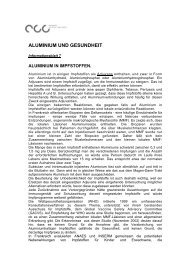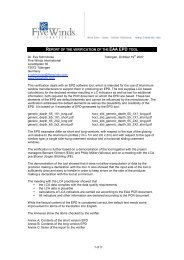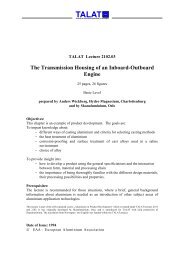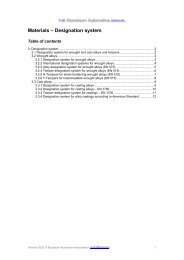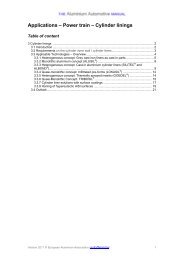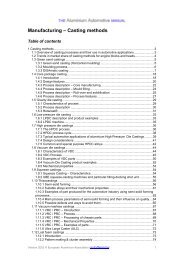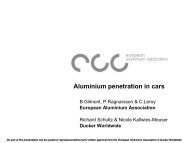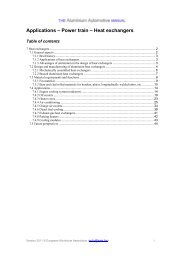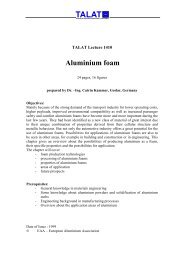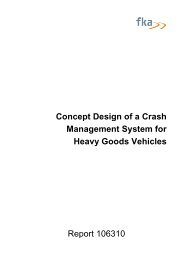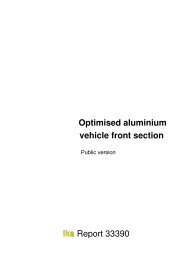aluminium in commercial vehicles - European Aluminium Association
aluminium in commercial vehicles - European Aluminium Association
aluminium in commercial vehicles - European Aluminium Association
You also want an ePaper? Increase the reach of your titles
YUMPU automatically turns print PDFs into web optimized ePapers that Google loves.
EUROPEAN ALUMINIUM ASSOCIATION ALUMINIUM IN COMMERCIAL VEHICLES CHAPTER XI 147<br />
Galvanic corrosion<br />
2.2. Types of <strong>alum<strong>in</strong>ium</strong> corrosion <strong>in</strong> <strong>commercial</strong> <strong>vehicles</strong><br />
Although highly resistant to corrosion<br />
through its natural oxide<br />
film, the follow<strong>in</strong>g types of corrosion<br />
can occur <strong>in</strong> <strong>commercial</strong><br />
vehicle construction or operation:<br />
• Galvanic corrosion<br />
• Crevice corrosion<br />
• Pitt<strong>in</strong>g corrosion<br />
• Filiform corrosion<br />
2.2.1. Galvanic corrosion<br />
Galvanic or bimetallic corrosion<br />
can occur when two different<br />
metals (or electroconductive<br />
non-metallic materials) are <strong>in</strong><br />
contact with each other <strong>in</strong> the<br />
presence of an electrolyte. The<br />
reason for this type of corrosion<br />
is the difference <strong>in</strong> the electrochemical<br />
potential of the two<br />
metals. Alum<strong>in</strong>ium is a very electronegative<br />
metal and therefore<br />
special attention has to be paid<br />
when <strong>alum<strong>in</strong>ium</strong> is used <strong>in</strong> com-<br />
b<strong>in</strong>ation with other metals under<br />
the presence of an electrolyte<br />
(such as water). In an electrochemical<br />
reaction, the <strong>alum<strong>in</strong>ium</strong><br />
is work<strong>in</strong>g as an anode and is<br />
dissolv<strong>in</strong>g, while the other metal<br />
reta<strong>in</strong>s its <strong>in</strong>tegrity.<br />
In this case, the <strong>alum<strong>in</strong>ium</strong> ions<br />
react with the oxygen of the<br />
water to alum<strong>in</strong>a (Al O ), which<br />
2 3<br />
builds a white layer on the <strong>alum<strong>in</strong>ium</strong><br />
surface.



